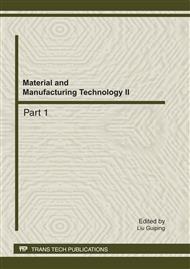p.58
p.63
p.68
p.73
p.77
p.80
p.85
p.89
p.94
Experimental Study on Mechanical Properties of Sole Materials of Aerobics Sports Shoes
Abstract:
The purpose of this study was to understand damping and anti-slip properties of the Reebok and the Huakang shoes, evaluate the mechanical effect of those aerobics sports shoes as well. From the biomechanical test, almost all mean pressure, average impulse and average pressure of the Reebok and the Huakang was less than the bare foot condition on "shoes - ground", but the average pressure, average impulse and average pressure of the Reebok shoes was slightly higher than the Huakang shoes. Meanwhile, the damping mechanics indexes do not exist significant differences (P>0.05). It’s friction coefficient tests show that dynamic or static friction coefficient of the Reebok is superior than the Huakang, and dynamic or static friction coefficient does exist significant differences (P<0.05).
Info:
Periodical:
Pages:
77-79
Citation:
Online since:
September 2011
Authors:
Keywords:
Price:
Сopyright:
© 2012 Trans Tech Publications Ltd. All Rights Reserved
Share:
Citation:


